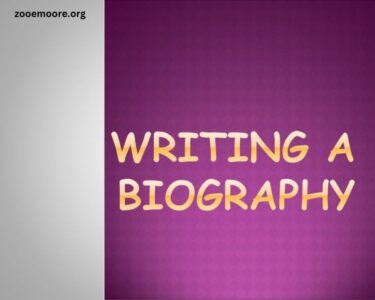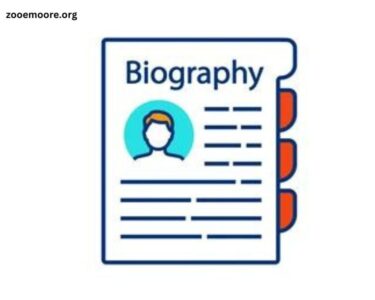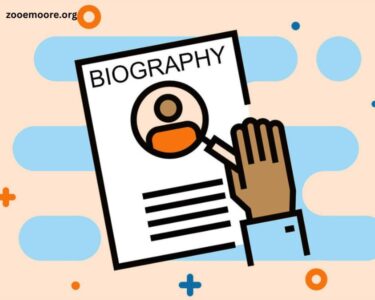Writing a biography is an intricate process that requires careful planning and an understanding of the subject’s life. Whether you’re penning the life story of a public figure, a historical character, or a beloved family member, the beginning of your biography sets the tone for the entire work. This article provides a comprehensive guide on how to start a biography effectively, ensuring that you capture the essence of your subject and engage your readers from the outset.
Understand Your Subject
Before you start writing, it’s crucial to have a deep understanding of the subject’s life, achievements, and impact. This involves:
- Research: Gather information from various sources such as books, articles, interviews, and autobiographies. Ensure that your research is thorough and diverse to get a well-rounded view of the subject’s life.
- Interviews: If possible, conduct interviews with people who knew the subject personally. Their insights can provide valuable context and unique perspectives that aren’t available in written sources.
- Contextual Analysis: Understand the historical, cultural, and social context in which the subject lived. This will help you portray their life accurately and meaningfully.
Define Your Purpose
Decide on the purpose of your biography. Are you aiming to inform, inspire, or entertain? Your purpose will guide the tone and structure of your biography. Consider the following:
- Biographical Focus: Determine whether you want to focus on the subject’s entire life or a specific aspect, such as their career, achievements, or personal struggles.
- Audience: Identify your target audience. Are you writing for a general audience, scholars, or fans of the subject? Tailoring your approach to your audience will influence your writing style and depth.
Craft a Captivating Introduction
The introduction of your biography should grab the reader’s attention and set the stage for the rest of the book. Consider the following strategies:
- Start with a Hook: Begin with a compelling anecdote, quote, or fact about the subject that piques curiosity. For example, if writing about a historical figure, you might start with a dramatic moment from their life.
- Present the Thesis: Clearly state the main theme or purpose of the biography. This will give readers a sense of what to expect and why the subject’s story is worth telling.
- Establish the Subject’s Significance: Explain why the subject is important and what makes their story unique. Highlight their major achievements, contributions, or impact on their field or society.
Provide Background Information
After the introduction, offer some background information to set the context. This can include:
- Early Life: Discuss the subject’s early life, including their family background, upbringing, and formative experiences. This helps readers understand the influences that shaped their character and ambitions.
- Historical Context: Provide an overview of the era in which the subject lived. This helps readers appreciate the challenges and opportunities they faced.
- Key Influences: Mention any significant individuals or events that influenced the subject’s life and career.
Outline the Structure
A well-organized structure is essential for a coherent and engaging biography. Consider breaking down the biography into the following sections:
- Chronological Order: Present the subject’s life in chronological order, starting from their birth and moving through significant events and milestones. This traditional approach helps readers follow the narrative easily.
- Thematic Sections: Alternatively, you can organize the biography thematically, focusing on different aspects of the subject’s life, such as their career, personal life, and achievements.
- Key Milestones: Highlight key milestones and turning points in the subject’s life. These are moments that had a significant impact on their personal and professional trajectory.
Create an Outline
Before diving into writing, create a detailed outline of your biography. This should include:
- Introduction: A summary of the introduction and the hook you plan to use.
- Major Sections: A breakdown of the main sections or chapters, including the topics and key points you plan to cover.
- Supporting Details: List the key events, anecdotes, and quotes that will support each section. This will help you stay organized and ensure that you cover all important aspects of the subject’s life.
Develop a Writing Style
Your writing style will significantly impact the readability and engagement of your biography. Consider the following:
- Tone: Choose a tone that aligns with your purpose and audience. For instance, a biography of a historical figure might have a formal tone, while a biography of a contemporary celebrity might be more informal and conversational.
- Voice: Develop a narrative voice that complements the subject’s personality and the story you’re telling. This might involve adopting a more objective tone for a scholarly biography or a more personal and emotive tone for a biography aimed at a general audience.
- Language: Use clear and concise language to convey complex ideas and events. Avoid jargon and overly complex sentences that might confuse readers.
Include Anecdotes and Quotes
Anecdotes and quotes add depth and authenticity to your biography. They provide personal insights and bring the subject to life. Consider:
- Anecdotes: Include interesting and relevant anecdotes that illustrate the subject’s character, achievements, or challenges. These stories make the biography more engaging and relatable.
- Quotes: Incorporate quotes from the subject, their contemporaries, or historians to add credibility and provide different perspectives. Ensure that quotes are accurate and well-integrated into the narrative.
Revise and Edit
After completing your initial draft, revise and edit your work to ensure clarity, accuracy, and coherence. Focus on:
- Content Accuracy: Verify the facts and ensure that the information presented is accurate and well-supported by evidence.
- Flow and Coherence: Check that the narrative flows smoothly and that the structure is logical. Ensure that transitions between sections are clear and seamless.
- Grammar and Style: Proofread for grammatical errors, punctuation, and stylistic inconsistencies. Consider seeking feedback from others to gain different perspectives on your writing.
Conclude with Impact
The conclusion of your biography should provide a thoughtful reflection on the subject’s life and legacy. Consider:
- Summary of Achievements: Recap the subject’s major achievements and contributions. Highlight their impact on their field or society.
- Personal Reflection: Offer your personal insights or reflections on the subject’s life and significance. This adds a unique perspective and can leave a lasting impression on readers.
- Final Thoughts: Conclude with a statement that ties together the themes of the biography and reinforces the subject’s importance.
Conclusion
Starting a biography involves more than just detailing a subject’s life; it requires careful planning, research, and a thoughtful approach to storytelling. By understanding your subject, defining your purpose, crafting a captivating introduction, and organizing your content effectively, you can create a biography that not only informs but also engages and inspires readers. Remember, the key to a compelling biography lies in presenting a well-rounded and meaningful portrayal of the subject’s life and achievements.



